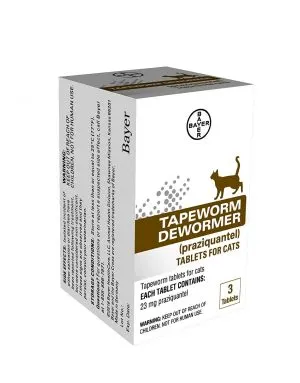Worms are almost always a fact of life for cat parents. How to get rid of worms in cats is – or should be – one of those concerns that we are always aware of. Worms are everywhere. At any given moment about 45 percent of the domestic cat population is infected with worms. Ewwww.
Not only do our cats suffer with worms of several varieties, some of those varieties can infect HUMANS. So finding ways to prevent and get rid of worms in cats is a quest all cat lovers should prepare themselves for.
In this article:
- How to Detect…
- Roundworms
- Tapeworms
- Hook Worms
- Stomach Worms
- How to Prevent Worms in Cats
- Getting Rid of Worms in Cats
How to Tell if Your Cat Has Roundworms
Roundworms are by far the most common variety of worms in cats. If you have a tiny kitten, you can almost bet the ranch that kitty has roundworms, since mom often transmits parasites in her milk.
This parasite is more technically known as Toxascaris leonine or Toxocara cati. This is the kind of feline parasite your kitty is most likely to share with you.
Roundworms are pale in color and are from 2 to 4 inches long. Keep an eye out for them in Kitty’s stool or in her vomit. The symptoms of a roundworm infestation include a dull coat, frequent diarrhea or loose stools, vomiting, a pot-bellied appearance that develops in a short period of time, and unusual lethargy.

As previously mentioned, kittens ingest the Toxocara cati larvae in their mother’s milk where the little thugs hang out in Mom’s mammary glands. Mom probably got roundworms where all cats get them. Parasite larvae enter the cat when she grooms herself.
These parasites often make their way to the mammary glands of a pregnant female and lie dormant until the kittens come. Because kittens are small and haven’t much blood to share with roundworms, they can quickly become anemic.
How to Spot Tapeworms
Watch for small wiggly things about the size and shape of a grain of rice on Kitty’s stool, or even lingering about her anus. If you spot them, you have a tapeworm problem.
Discover FK’s choice | Best tapeworm medicine for cats
Dipylidium caninum, is the official name for this nasty parasite. Cats usually have tapeworms visited upon them when they ingest fleas or their dirt. The infestation usually has the following symptoms: weight loss and the appearance of little tapeworm segments that break off and emerge in feces.
Have You Heard of Hookworms ?
You will probably never see a hookworm. They are small, thin, and only grow to about 1/8 of an inch long. They are Ancylostoma braziliense.
These worms can also be transmitted to humans if their bare skin comes into contact with the parasite. (Yes. Walking barefooted near the litter box is ill advised.)
So if you asked yourself: “can I get worms from my cat” the answer is yes. So you should be careful!

Most adult cats become immune to the effects of hookworms, but kittens are particularly at risk. Once ingested, even through mother’s milk, the worm attaches itself to the intestine and lives there devouring blood.
You will observe the symptoms of hookworm in your kitten as vomiting with bloody stool and//or diarrhea, and general weakness.
Detecting Stomach Worms
Stomach worms are less common among domestic cats, but can be dangerous just the same. They are not easy to see in stool.
Ollulanus tricuspis generally thrive where many cats are housed together and are transmitted from a cat ingesting the worms in the vomit of another cat or ingesting one of the many hosts (Including cockroaches, beetles, grubs, and rodents.)

The symptoms of a stomach worm infestation are:
- vomiting
- weight loss
- inactivity or lethargy
Worms Prevention
Unless or until you have a serious flea prevention program in place, worms are a constant worry.
Use a good flea collar, pills, or topical preventative according to directions, and do it all year long. Ask your veterinarian about your options.
Since you can’t control the world outside your home, keeping your cat indoors is the best way to stop worms from infesting your pet.
Nevertheless, know that all manner of ugly, unwanted hitch-hikers can come into the house on the shoes of family members or pets who are allowed to wander around in places where feces can be found and fleas abound.
Whenever you treat for fleas, be sure to clean Kitty’s bed as well.

Remove fecal matter from the litter box quickly, and wear gloves as you do it to protect yourself.
Good hygiene is important. Know that there are opportunities for worms to take over your household if you’re not careful particularly if your cat sees himself as a “jungle beast” who hunts for prey – probably worm infested – outside.
Deworming Strategy
If you take a stroll down the worm aisle of your favorite pet products emporium, you will see any number of products meant to vanquish parasites of any and all kinds.
It’s tempting to get a bottle of “Worm-B-Gone” and have an end to it. Sadly, though, unless you’re positive of the kind or combination of worms your cat has, you may not be able to effectively deal with the worms.
Always trust your vet when it comes to buying over-the-counter medications for your pet.
The best news is most veterinarians include checking for parasites and deworming in regular well-cat visits. They also urge you to fight fleas as a matter of course.
This means if your kitty is getting her regular checkups every six-months or so, you don’t have much to worry about. We believe your trusted veterinarian is your first best defense against parasites!
Final Thoughts: How to Get Rid of Worms in Cats
Parasites can rob your pet of her health and well being. Treating worms must be a matter of constant vigilance. Treating for fleas is the critically important first step!
By limiting the chances your cat has to ingest the parasite, the better off you’ll both be. If your feline friend refuses to stay inside and away from the awful squirmy bad-guys, you must take all other precautions your vet advises you to take.

